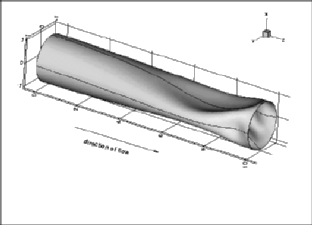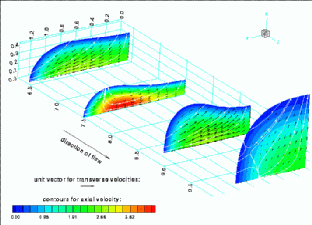Research Interests: Computational Mechanics and Biomechanics
Many fluid conveying vessels in the human body are elastic and deform
substantially in response to the forces that the fluid exerts on them.
Since any change to the vessel's geometry directly affects the fluid
flow, the behaviour of such systems is often dominated by strong
fluid-structure interactions which can give rise to many interesting
phenomena (such as flow limitation or self-excited oscillations).


Example of flow in a strongly collapsed tube.
Physiological examples include: the flow of blood in the veins and
arteries; the flow of air in the airways of the lung; surface tension
driven fluid-elastic instabilities of the thin liquid film which lines the
airways. Further examples for fluid-structure interaction problems can
be found in many engineering applications (flutter instabilities in
aerodynamics and in pipe flow; advanced fluid-elastic damping
elements; design of efficient sails). The most famous example of
flow induced self-excited oscillations in an engineering structure is
probably the
Tacoma bridge disaster.
Current research is concerned with the mathematical modelling
and computational solution of the large-displacement fluid-structure
interaction problems which arise in such systems. By its nature
this research spans a wide range
of disciplines (fluid and solid mechanics, mathematical modelling,
the development of novel computational methods as well as analytical work and
- occasionally - experimental investigations). Collaborations with
academic and industrial research groups in the UK and overseas exist.
Page last modified: April 3, 1998
Back to Ma
tthias Heil's home page..



